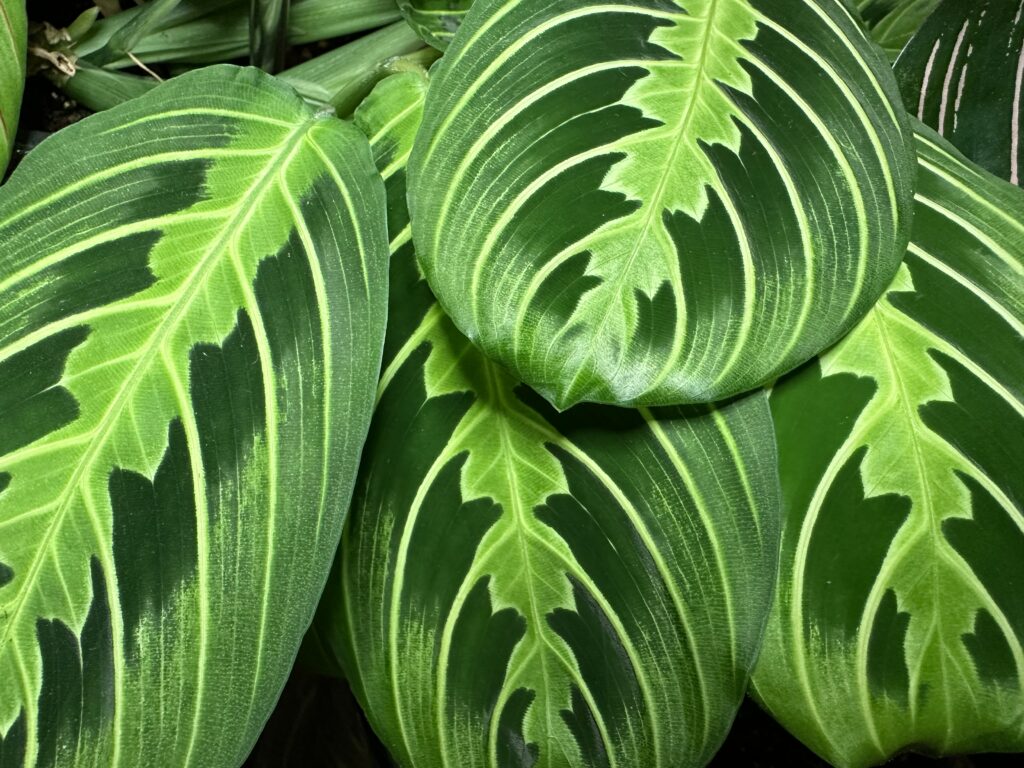Prayer plants, scientifically known as Maranta leuconeura, are a highly sought-after houseplant due to their distinctive foliage and effortless maintenance. These plants are indigenous to the tropical regions of Central and South America and are named after their peculiar habit of folding their leaves upwards at night, resembling hands in prayer.
Not only do prayer plants add a touch of greenery to any indoor space, but they also aid in purifying the air. Their ability to thrive in low light conditions makes them an ideal choice for those who lack access to natural light.
In this article, we’ll dive into the best types of prayer plants to help you select the perfect one for your home or office. From the classic green and white striped variety to the more unique red-veined option, there is a prayer plant out there for everyone. So, let us embark on a journey to discover the beauty of these fascinating plants.
What Makes a Prayer Plant Unique?
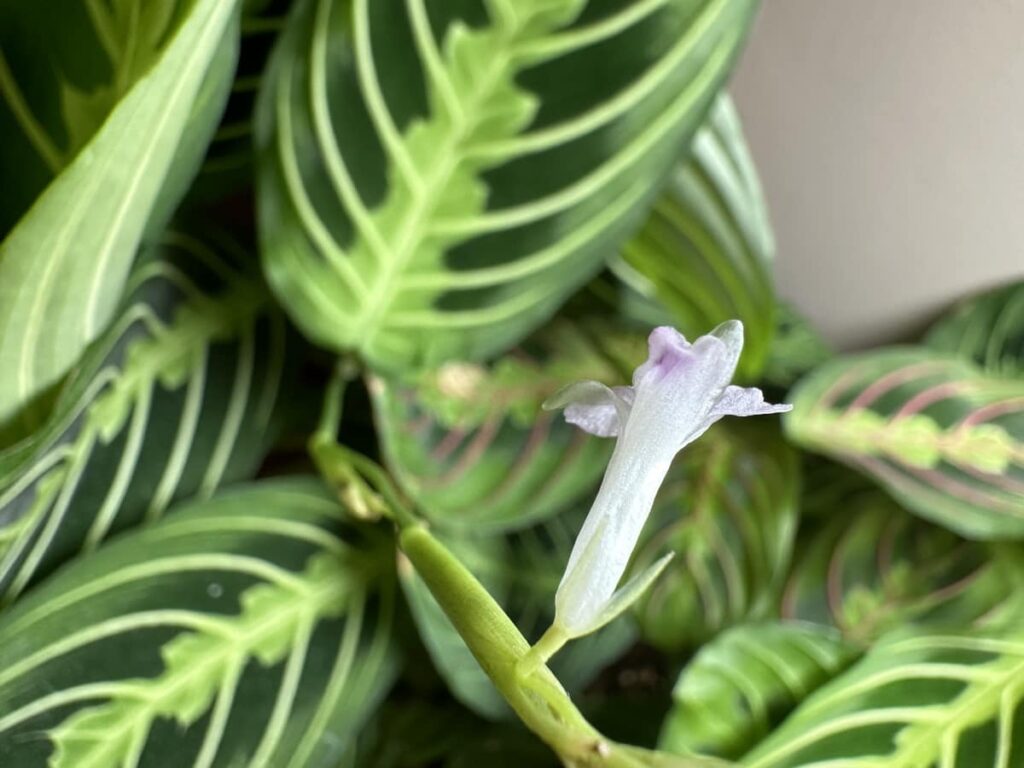
The Maranta leuconeura, commonly known as the prayer plant, is a highly sought-after houseplant due to its distinct features. One of the most fascinating aspects of this plant is its ability to respond to light by moving its leaves. During the day, the leaves are spread out flat to maximize sunlight absorption, while at night, they fold up, resembling hands in prayer, hence the name “prayer plant.”
In addition to its unique movement, the prayer plant boasts vibrant and colorful foliage. The leaves are typically green with intricate patterns of red, pink, or white veins, and some varieties even have purple undersides, adding an extra burst of color to any room.
Despite its exotic appearance, the prayer plant is relatively easy to care for, making it an excellent choice for beginners. It thrives in bright, indirect light and well-draining soil, and it prefers a humid environment. To keep it healthy, misting the leaves or placing a humidifier nearby can do wonders. Its unique ability to move and its colorful foliage add a touch of whimsy to any space, while its low-maintenance care requirements make it a must-have addition to any plant collection.
The 6 Best Types of Prayer Plants
Prayer plants, also known as Maranta plants, are a popular choice for indoor houseplants due to their unique foliage and easy care requirements. These plants are a great way to add a touch of nature to any room, with their striking patterns and vibrant colors. However, with so many different types of prayer plants available, it can be difficult to know which one to choose.
Maranta Leuconeura (Red Prayer Plant)
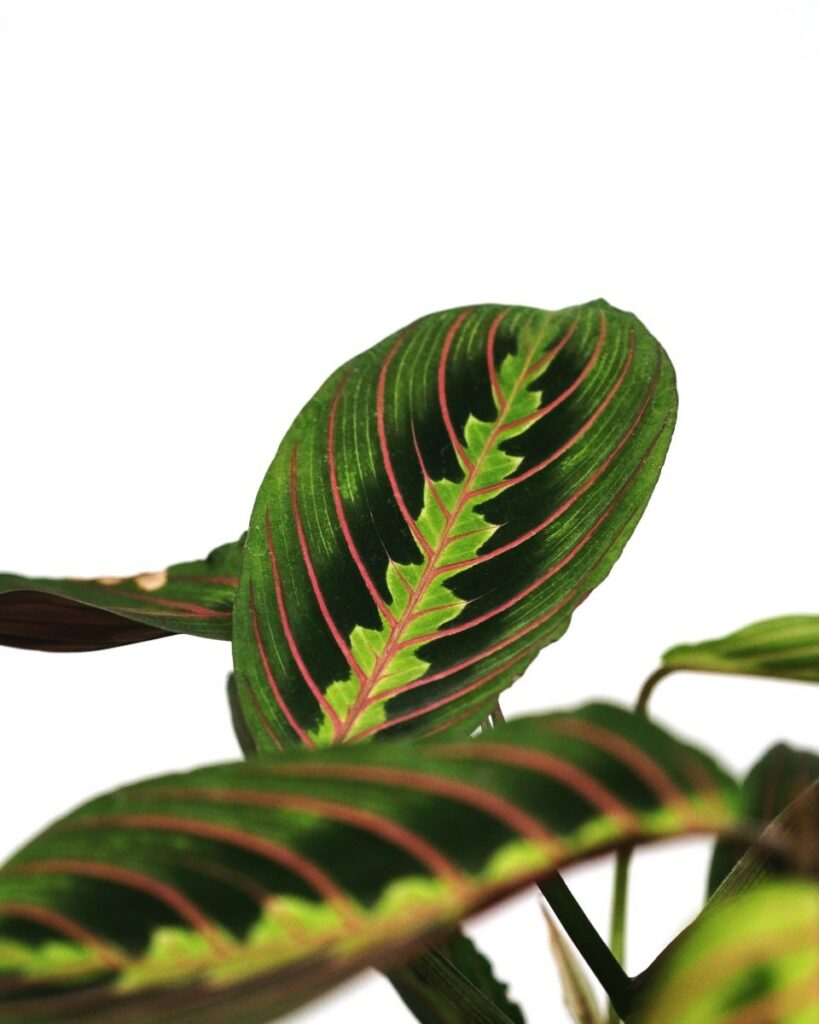
The Red Prayer Plant, scientifically known as Maranta Leuconeura, is a plant that has captured the hearts of many plant enthusiasts. Its striking foliage and ease of care make it a popular choice for indoor spaces. This plant is native to the tropical regions of Brazil and has a unique ability to fold its leaves upward at night, resembling hands in prayer.
The Red Prayer Plant is a sight to behold with its dark green leaves and vibrant red veins that run throughout the foliage. It is a stunning addition to any indoor space and is sure to catch the eye of anyone who enters the room. This plant thrives in bright, indirect light and prefers to be kept in consistently moist soil. However, overwatering should be avoided at all costs, as it can lead to root rot.
One of the many benefits of the Red Prayer Plant is its air-purifying properties. It is an excellent choice for improving indoor air quality and creating a healthier living environment. Additionally, this plant is non-toxic to pets, making it a safe option for households with furry friends.
Overall, the Red Prayer Plant is a low-maintenance plant that is sure to add a pop of color to any room. Its unique ability to fold its leaves at night adds an element of intrigue and makes it a conversation starter among guests. So, if you’re looking for a beautiful and easy-to-care-for plant, the Red Prayer Plant is definitely worth considering.
Maranta Leuconeura ‘Lemon Lime’ (Lemon Lime Prayer Plant)
The lemon lime prayer plant has gained popularity among plant enthusiasts. Native to the rainforests of Brazil, this tropical perennial boasts stunning foliage. Its leaves feature a mesmerizing combination of vibrant green, yellow, and lime hues, with unique patterns resembling artistic brushstrokes. The undersides of the leaves add an extra touch of allure with their reddish-purple coloration, adding a splash of natural beauty to any indoor space.
Caring for a lemon lime prayer plant is relatively easy, making it great for veteran plant owners and beginners. These plants prefer bright, indirect light and regular waterings so the soil doesn’t completely dry out. Like other prayer plants, they appreciate high humidity levels, so misting the leaves or placing the plant on a tray filled with water and pebbles can help create a more humid environment.
Their low maintenance requirements and wide availability of this plant make it an attractive and affordable option. It can thrive in average room conditions, making it suitable for those who may not have a green thumb or have limited time for plant care.
Another benefit of the lemon lime prayer plant is its ability to purify the air. Like many other houseplants, it helps filter toxins and releases oxygen, contributing to a healthier indoor environment. With its mesmerizing foliage, easy care requirements, air purification benefits, and enchanting leaf movement, it’s no wonder why this plant has become a sought-after choice for plant lovers. Whether you’re a seasoned gardener or a beginner, the lemon lime prayer plant is sure to bring joy and tranquility to your home.
Calathea Orbifolia (Round-Leaf Calathea)
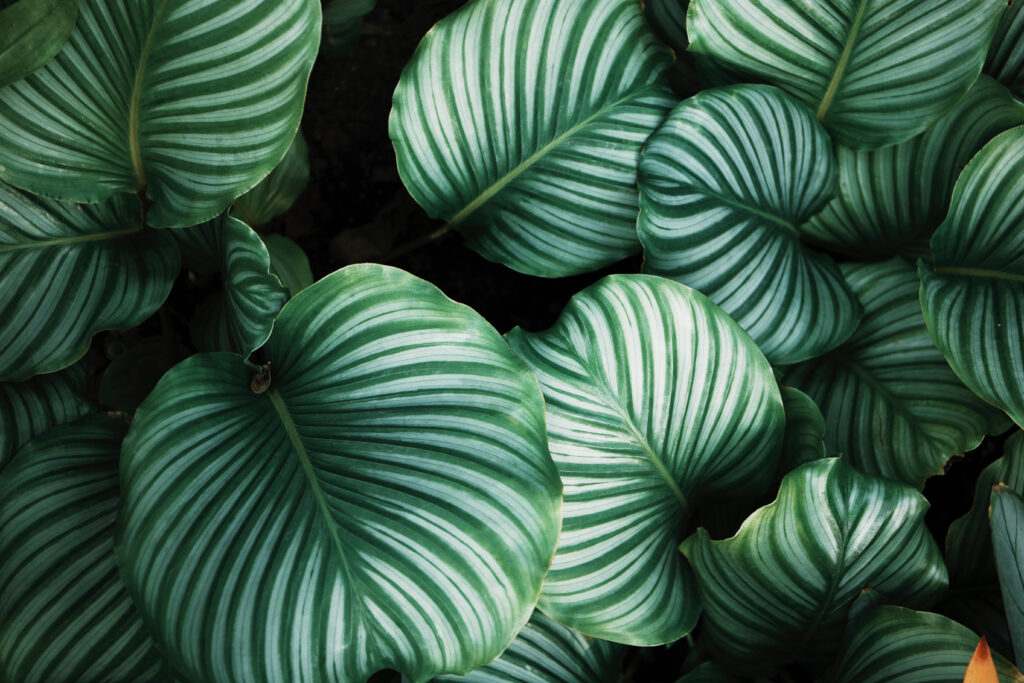
The Calathea Orbifolia, also referred to as the Round-Leaf Calathea, is a prayer plant that is highly coveted by plant enthusiasts due to its stunning appearance. This plant is indigenous to South America and is renowned for its large, round leaves that possess a striking silver-green coloration with dark green stripes.
One of the primary reasons why the Calathea Orbifolia is so popular is due to its foliage, which is truly one-of-a-kind. The leaves are large and round, making them stand out in any room. Furthermore, the silver-green coloration with dark green stripes adds a touch of elegance to any space.
Another reason why the Calathea Orbifolia is an excellent choice for a prayer plant is due to its low maintenance requirements. This plant prefers bright, indirect light and moist soil. However, it is crucial not to overwater the plant as this can lead to root rot.
The Calathea Orbifolia is also renowned for its air-purifying properties. This plant can help to remove toxins from the air, making it an excellent choice for individuals who suffer from allergies or respiratory issues.
The Calathea Orbifolia is a stunning and low-maintenance prayer plant that is ideal for any home or office. Its unique foliage and air-purifying properties make it an excellent choice for plant enthusiasts of all levels.
Stromanthe Triostar (Tricolor Prayer Plant)
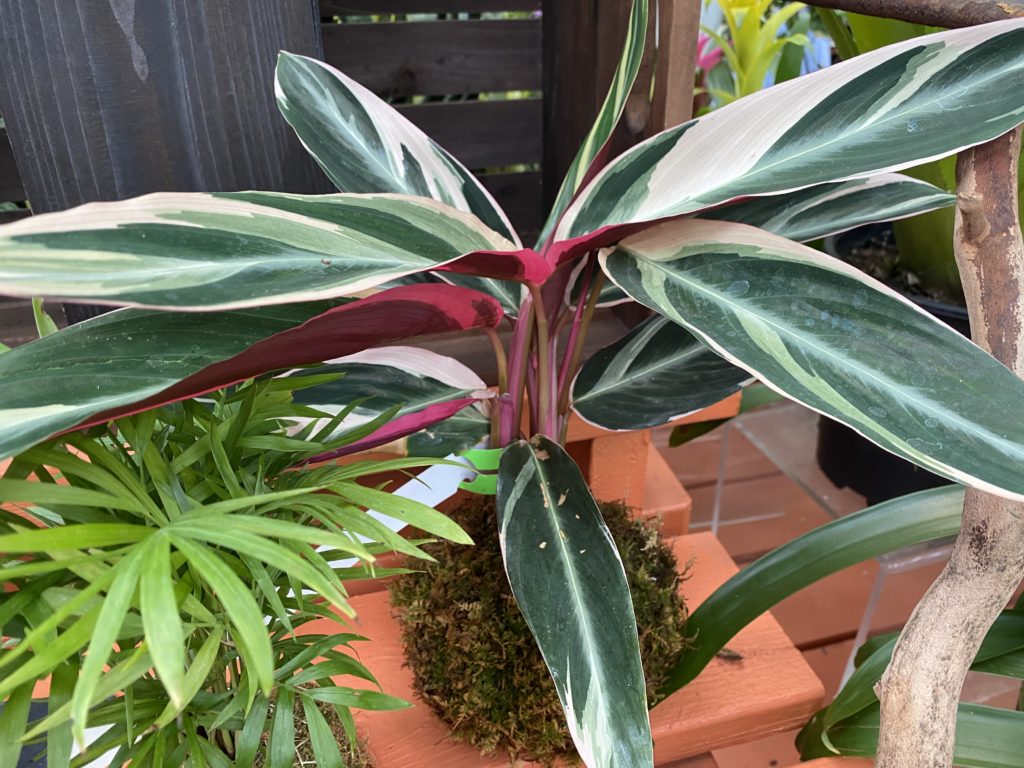
The Stromanthe Triostar, also known as the Tricolor Prayer Plant, is a highly sought-after plant due to its unique and vibrant foliage. This plant is a member of the Marantaceae family, which includes other popular prayer plants such as the Calathea and Maranta, and is native to the tropical rainforests of Brazil.
Caring for the Stromanthe Triostar is relatively easy, making it a great choice for both beginner and experienced plant owners. It prefers bright, indirect light and well-draining soil that is kept consistently moist. However, overwatering should be avoided as it can lead to root rot and other issues.
The foliage of the Stromanthe Triostar is one of its most striking features. The leaves are a mix of green, cream, and pink, with bold stripes and patterns that make it a true statement piece in any room. Additionally, the leaves have a unique ability to move throughout the day, opening and closing in response to changes in light and temperature.
Not only is the Stromanthe Triostar aesthetically pleasing, but it also has air-purifying properties. Like other prayer plants, it can help to remove toxins from the air and improve overall air quality in your home or office.
Overall, the Stromanthe Triostar is a low-maintenance plant that is sure to add a pop of color and interest to any space. Whether you are a seasoned plant parent or just starting out, this plant is definitely worth considering for your collection.
Ctenanthe Burle-Marxii (Fishbone Prayer Plant)
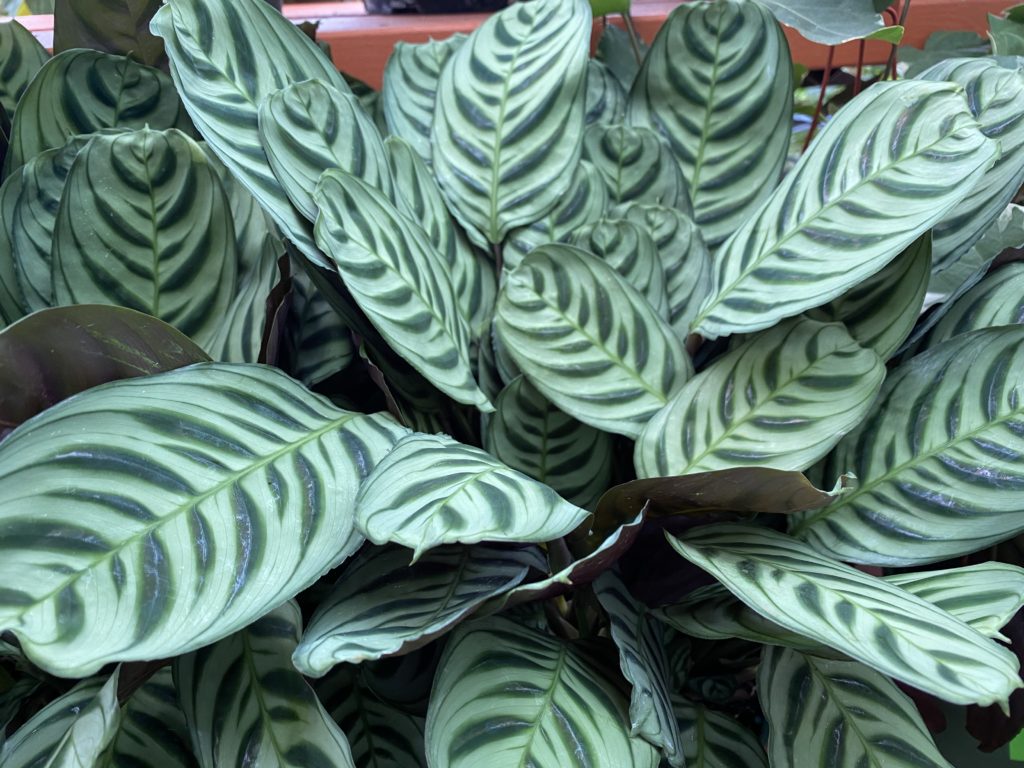
The Ctenanthe Burle-Marxii, also known as the Fishbone Prayer Plant, is a plant that has captured the hearts of many plant enthusiasts due to its striking and unique appearance. Its elongated, fishbone-shaped leaves are a deep green color with contrasting silver stripes, while the undersides of the leaves are a deep purple, adding to its visual appeal.
But the Ctenanthe Burle-Marxii is not just a pretty face. It is also a great choice for those who want a low-maintenance plant. It thrives in low to medium light conditions and prefers to be kept in moist soil. And if you want to keep its humidity levels up, occasional misting will do the trick.
One of the most fascinating things about the Ctenanthe Burle-Marxii is its prayer plant behavior. At night, it folds its leaves upward, resembling hands in prayer. This unique characteristic adds to its charm and makes it a great addition to any home or office space.
Overall, the Ctenanthe Burle-Marxii is a visually stunning and low-maintenance prayer plant that stands out among other types of prayer plants. Its unique appearance and prayer plant behavior make it a standout choice for those who want a plant that is both beautiful and easy to care for.
Calathea Roseopicta (Medallion Prayer Plant)
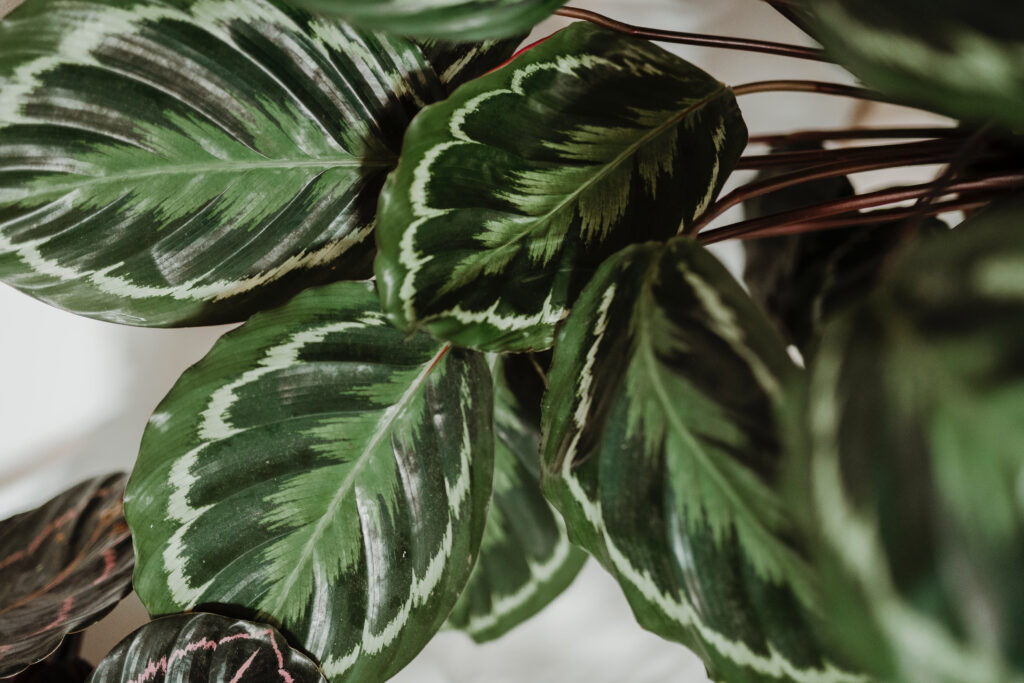
The Calathea Roseopicta, also known as the Medallion Prayer Plant, is a plant that is highly sought after by plant enthusiasts due to its stunning foliage. The leaves of this plant are large and oval-shaped, with deep green hues and intricate patterns of pink and white stripes that are sure to catch the eye. The undersides of the leaves are a deep maroon color, adding to its visual appeal and making it a true masterpiece of nature.
But the Calathea Roseopicta is not just a pretty face. It is also known for its air-purifying properties, making it a great addition to any indoor space. This plant thrives in low to medium light conditions and prefers to be kept in moist soil. It is important to avoid direct sunlight and to keep the soil consistently moist, but not waterlogged, in order to ensure its optimal growth.
Despite its stunning appearance, the Calathea Roseopicta is a relatively low-maintenance plant, making it a great choice for beginners. It is also non-toxic to pets, making it a safe option for households with furry friends. So, if you’re looking for a plant that is both beautiful and easy to care for, the Calathea Roseopicta is definitely worth considering.
Overall, the Calathea Roseopicta is a plant that is sure to add a touch of elegance to any space. Its unique foliage and air-purifying properties make it a top choice for prayer plant enthusiasts, and its low-maintenance nature makes it a great option for anyone looking to add a bit of greenery to their home or office.
How to Care for Your Prayer Plant
Prayer plants, with their unique foliage and easy care requirements, are a popular choice for indoor plants. But how do you care for them? Here are some tips to keep your prayer plant healthy and happy:
First, let’s talk about light. Prayer plants prefer bright, indirect light, but direct sunlight can scorch their leaves. If your plant isn’t getting enough light, you may notice its leaves curling or turning yellow.
Next up, water. Keep the soil moist, but don’t overwater. Wait until the top inch of soil feels dry to the touch before watering. And make sure your pot has good drainage to avoid root rot.
Humidity is also important for prayer plants. They thrive in high humidity environments, so consider placing a tray of water near the plant or using a humidifier. Misting the leaves can also help.
Temperature is another factor to consider. Prayer plants prefer temperatures between 60-80°F (15-27°C), so avoid placing them near cold drafts or heating vents.
Don’t forget about fertilizer! Feed your prayer plant once a month during the growing season (spring and summer) with a balanced fertilizer. But don’t fertilize during the winter months when the plant is dormant.
Finally, pruning is important to keep your prayer plant looking its best. Remove any dead or yellowing leaves to help the plant focus its energy on new growth.
By following these care tips, your prayer plant will thrive and continue to add beauty to your indoor space.
Common Problems and Solutions for Prayer Plants
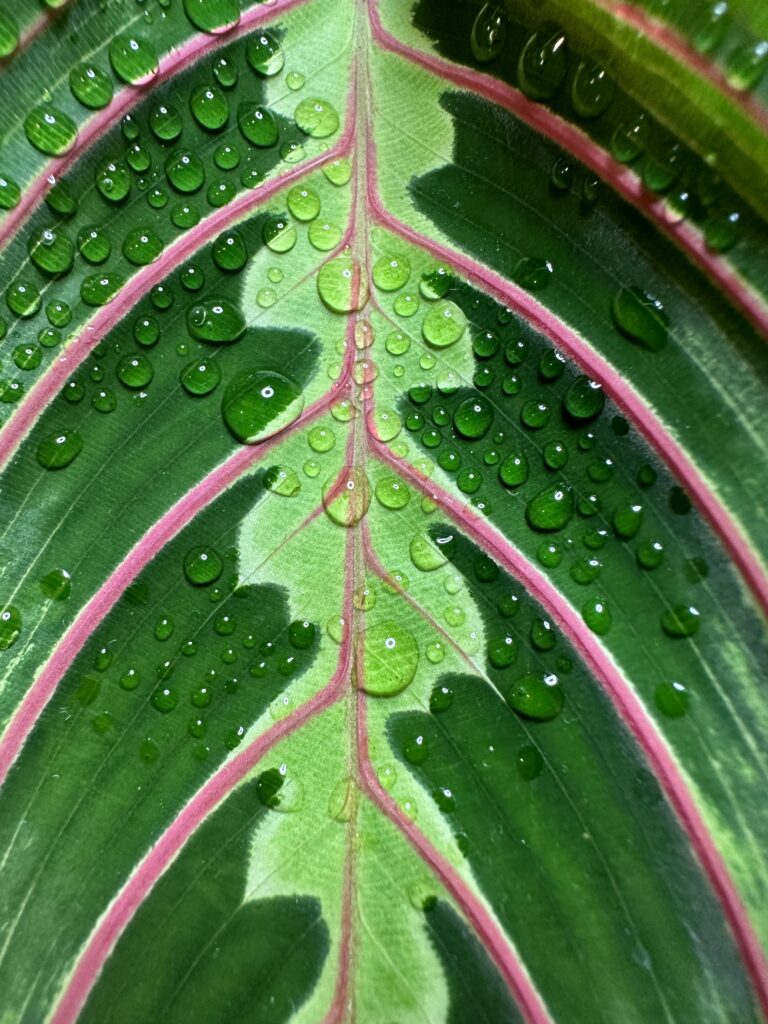
Prayer plants are a delightful addition to any home, but like any living thing, they can encounter some issues. Here are some common problems that prayer plant owners may face and how to solve them:
Brown tips on leaves
This is a pesky problem that can be caused by dry air or underwatering. To tackle this issue, increase the humidity around the plant by misting it regularly or placing a humidifier nearby. Make sure to water the plant thoroughly and consistently, but avoid overwatering.
Yellowing leaves
Yellowing leaves can be a sign of overwatering or underwatering. It’s important to check the soil moisture level and adjust your watering schedule accordingly. If the soil is too wet, allow it to dry out before watering again. If the soil is too dry, water the plant thoroughly and consistently.
Drooping leaves
Drooping leaves can be a sign of underwatering or overwatering. It’s crucial to check the soil moisture level and adjust your watering schedule accordingly. If the soil is too dry, water the plant thoroughly and consistently. If the soil is too wet, allow it to dry out before watering again.
Pests
Prayer plants can be vulnerable to pests such as spider mites and mealybugs. To prevent and treat pest infestations, regularly inspect your plant for signs of pests and remove any affected leaves or stems. You can also use insecticidal soap or neem oil to treat the plant.
By following these tips, you can keep your prayer plant healthy and thriving. Remember to regularly check your plant for any signs of problems and address them promptly to prevent further damage. With a little bit of care and attention, your prayer plant will flourish and bring joy to your home.
Conclusion: Choosing the Best Prayer Plant for You
When it comes to selecting the ideal prayer plant for your home, there are a few factors to consider. Your personal preferences and the conditions of your living space will play a significant role in determining which plant is the best fit for you.
If you’re dealing with low light conditions, fear not! The Maranta leuconeura or Maranta leuconeura var. kerchoveana may be the perfect option for you. On the other hand, if you’re blessed with bright, indirect light, the Calathea orbifolia or Calathea lancifolia may be more up your alley.
But what if you’re looking for something a little more unique? Enter the Stromanthe triostar or Ctenanthe setosa. These plants boast foliage that is sure to turn heads and make a statement in any room.
Regardless of which prayer plant you choose, it’s important to keep in mind that they require consistent moisture and humidity. To ensure your plant thrives, be sure to keep it in a well-draining pot and mist it regularly. With proper care, any of these prayer plants can bring a touch of tropical beauty to your living space.
Frequently Asked Questions
What are prayer plants?
Prayer plants are a type of houseplant that gets its name from the way its leaves fold up at night, resembling hands folded in prayer. They are known for their unique foliage and are popular among plant enthusiasts.
What are the best types of prayer plants?
There are many types of prayer plants. Balancing care needs with availability and affordability, some of our favorites include:
- Maranta leuconeura (also known as the red prayer plant)
- Maranta leuconeura var. kerchoveana (also known as the rabbit’s foot prayer plant)
- Maranta leuconeura var. fascinator (also known as the herringbone plant)
- Ctenanthe burle-marxii (also known as the fishbone prayer plant)
How do I care for prayer plants?
Prayer plants prefer bright, indirect light and well-draining soil. They also require consistent moisture, so be sure to water them regularly. Additionally, prayer plants benefit from occasional misting and fertilization during the growing season.
Why are my prayer plant’s leaves turning brown?
Brown leaves on a prayer plant can be a sign of several issues, including overwatering, underwatering, or exposure to direct sunlight. Try adjusting your watering schedule or moving the plant to a shadier spot to see if that helps.

